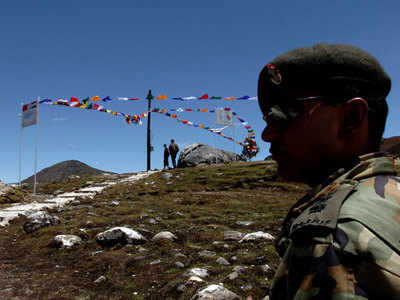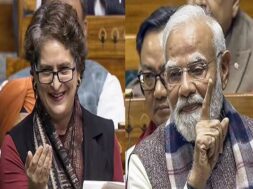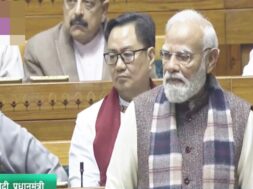
Manas Dasgupta
NEW DELHI, Sep 19: With both the sides adopting aggressive postures and the armies of India and China making preparations for dig-in to beat the killer cold in the coming winter months, the hopes of a solution to the border stand-off that was ignited after the foreign ministers’ level talks in Moscow on September 10 seems to be fast disappearing.
Soon after foreign minister S Jaishankar and his Chinese counterpart Wang Yi despite heated exchanges if views managed to arrive at a five –point agreement including immediate steps for disengagement of troops standing face-to-face in eastern Ladakh, the two defence ministers made acrimonious statements each blaming the other for the stand-off violating the 1993 and 1996 agreements between the two countries arrived at for maintaining the status quo at the undefined borders.
Praising the courageous Indian troops who had repulsed the aggressive designs of the People’s Liberation Army wanting to unilaterally change the status quo in eastern Ladakh, the defence minister Rajnath Singh had told Parliament earlier this week that the preparations were in full swing to enable the army to stay at the height on the Himalayan border where the winter temperature come down to minus 25 to 40 degrees Celsius. The Indian preparations were merely in response to the Chinese PLA arranging for digging-in during the winter months giving a clear indication that it was in no hurry to respond to India’s call for disengagement of troops at the border.
Some defence experts believe that China’s delaying tactics could be borne out of the fact that it had grand plans for China – Pakistan Economic Corridor (CPEC) which would also help it give some foothold in the Pakistan-Occupied Kashmir and Tibet while it had no incentive in settling the boundary issue with India as this would permanently block Beijing’s ambitions in South Asia.
At the Foreign Ministers’ meeting in Moscow, India reportedly highlighted its “strong concern at the massing of Chinese troops with equipment along the Line of Actual Control (LAC)”, the de facto border between the two countries. “The provocative behavior of Chinese frontline troops at numerous incidents of friction along the LAC also showed disregard for bilateral agreements and protocols,” Beijing was told.
According to China, Wang told Jaishankar that the “imperative is to immediately stop provocations such as firing and other dangerous actions that violate the commitments made by the two sides.”
Indian troops “scrupulously followed all agreements and protocols,” the Foreign Ministry told Beijing. “The presence of such large concentration of (Chinese) troops was not in accordance with the 1993 and 1996 agreements and created flash points along the LAC. The Chinese side has not provided a credible explanation for this deployment.”
The immediate task, “to prevent any untoward incident in the future” was “to ensure a comprehensive disengagement of troops in all the friction areas,” India told China, officials said, as New Delhi stressed that an “urgent resolution of the current situation was in the interest of both nations.”
In contrast, the Chinese Foreign Ministry said Beijing “is willing to support enhanced dialogue between the frontier troops on both sides to resolve specific issues. It claimed that “Wang outlined China’s stern position on the situation in border areas, emphasising that the imperative is to immediately stop provocation such as firing and other dangerous situations that violate the commitments made by the two sides.” China was emphatic that the “provocative firing started from the Indian side” while India contradicted it. “It is also important to move back all personnel and equipment that have trespassed. The frontier troops must quickly disengage so that situation may de-escalate,” the Chinese foreign ministry statement said.
“What China and India need right now is cooperation and not confrontation, and mutual trust, not suspicion. When the situation gets difficult, it is all the more important to ensure the stability of the overall relationship and preserve mutual trust,” the Chinese Foreign Ministry said.
But all that seems to be only on paper and the ground reality, the defence experts believed, could be the proposed change of status of Gilgit-Baltistan by Pakistan to make it its fifth province and the aggression by the PLA in Ladakh were believed to be part of Beijing’s grand plan to secure and expand the CPEC.
The experts pointed out that while on the one side China was agreeing to hold meeting of military commanders of the two countries in the coming week, to discuss disengagement and subsequent withdrawal of PLA troops from Ladakh, it had continued to build-up troops in occupied Aksai Chin and had started rotating troops on the LAC, indicating that it was preparing for a long haul on the border.
A disengagement and de-escalation have been discussed and agreed to at the levels of Special Representatives (July 5) and Foreign Ministers (September 10), but the PLA has made the restoration of status quo ante on LAC conditional, thus putting the entire exercise at jeopardy. Rather than withdraw in toto to base camps, the PLA wanted to have a toehold on the territory on the north bank of Pangong Tso to show its stamp of authority. During discussions, the PLA has talked about withdrawing to the pre-April position of Finger 8 spur on the lake but reportedly wanted to leave 50 troops at the present position, eight-kilometre up at finger 4. At certain places, it wants to place cameras to monitor Indian movements. Basically, it wanted to earmark the territory for future negotiations which had been rejected by the Indian side.
Just as the PLA has reached its perceived LAC on the north bank of the lake, the Indian side has reached its perceived LAC on the south bank, thanks to the courageous pre-emptive action by the Indian Army on August 29-30. The only option to restore peace and tranquility is for both sides to return to their base camps and stop contesting on friction points all over the 1597 km LAC in Ladakh. While the Indian side was willing to do this, the PLA saw this as a loss of face for a rising global power and would rather create a new normal on the LAC, the experts pointed out.
Pakistan’s design to assimilate Gilgit-Baltistan as one of is province would not only anger India which always maintained that POK was an integral part of India, it would also help in the expansion of CPEC and benefit China in controlling the restive populations of Buddhist Tibet and Muslim Xinjiang as the economic growth would feed into the militarization of both the autonomous regions. Already, China has started an expansion of its airbases in Tibet and Xinjiang by building underground pens for fighter aircraft as well as the deployment of top of the line missiles.
With Pakistan, Nepal, Sri Lanka and Myanmar now close allies, China’s next move could be to settle the border with Bhutan at all costs and try Thimpu to go the Nepal way adopting inimical postures against India completing China’s design of ring-fencing India. It would now be for the Narendra Modi government to try contest Beijing on each of its unwarranted moves, the experts said.














